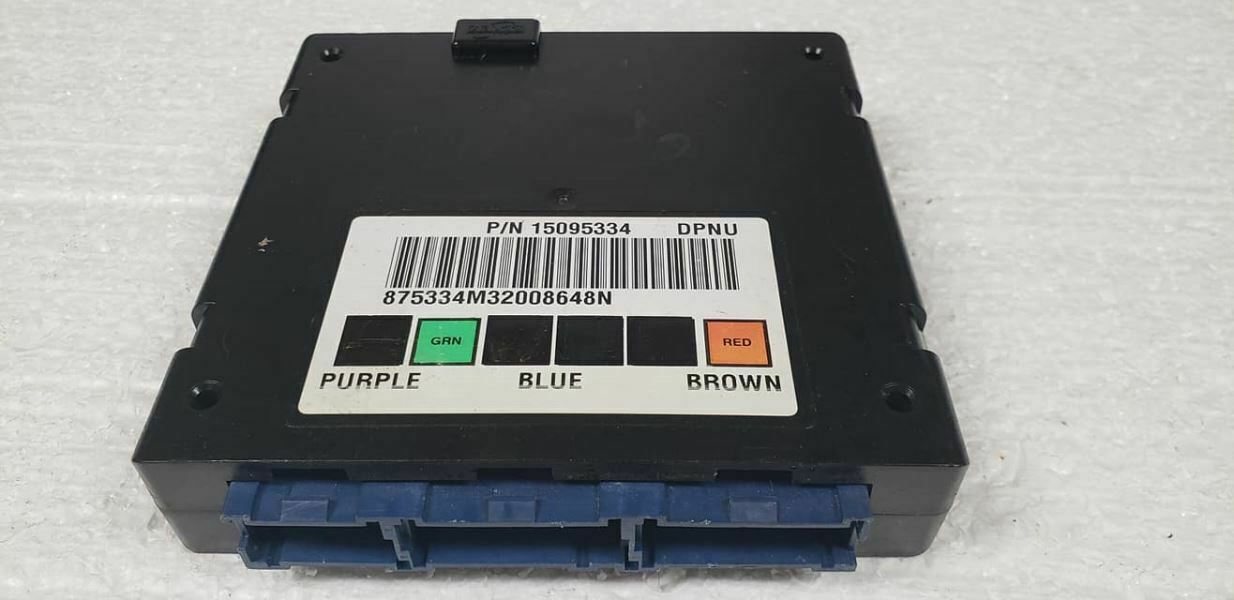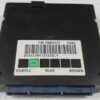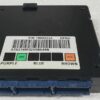Is Your GM Truck Plagued by Electrical Gremlins?
If you’re dealing with a 2002 Suburban or a similar GM truck that seems to have a mind of its own, you’re not alone. As a technician with over two decades of experience under the hood, I’ve seen firsthand how a failing Body Control Module (BCM) can turn a reliable vehicle into a source of daily frustration. The BCM is the central hub for your vehicle’s body electronics, and when it starts to fail, the symptoms can be bizarre and seemingly unrelated. This isn’t just a simple fix; it’s about restoring the core functionality and predictability you depend on.
This isn’t a generic, one-size-fits-all part. We take the guesswork and hassle out of the equation. Before we ship this module, our experts will program it using your vehicle’s specific Vehicle Identification Number (VIN). This ensures it has the latest GM software and is correctly configured for your truck’s options, making the installation process as smooth as possible. You get a reliable part that’s ready to work right out of the box, saving you a costly trip to the dealership for programming.
Case Study: A Tricky Diagnosis
A customer brought in a 2002 Yukon XL with a classic “haunted truck” complaint. The radio would switch off, the dome lights would flicker, and occasionally the security light would stay on, preventing the truck from starting. They had already replaced the battery and checked the grounds. After connecting my scan tool, I noticed several communication loss codes (U-codes) pointing to the BCM. Instead of communicating properly, the module was sending junk data across the network, causing chaos. By installing a VIN-programmed 2002 Suburban BCM (the same part family), we resolved all the electrical issues in one go. It’s a common failure point on these platforms, often due to internal circuit board solder joint failure over time.
Common Signs of a Failing BCM
A faulty BCM can manifest in many ways. If your truck is experiencing any of the following, a failing module is a highly likely cause:
- ✔ Power windows or door locks working intermittently or not at all.
- ✔ The security or anti-theft light stays illuminated, causing a no-start condition.
- ✔ Interior dome lights or dashboard lights flicker or fail to turn on/off correctly.
- ✔ Gauges on the instrument cluster behaving erratically or dropping to zero.
- ✔ The radio or climate control system randomly shuts down.
- ✔ Diagnostic trouble codes (DTCs) related to lost communication, such as U0140, U0155, or U0164.
A Straightforward Guide to Your BCM Installation
Replacing the BCM is a manageable job for a DIYer with basic tools. The key is our pre-programming service, which eliminates the most complex step. Here’s a general guide for a 2002 Suburban BCM installation (location may vary slightly for other models).
- Safety First: Always disconnect the negative terminal from your vehicle’s battery and wait a few minutes to ensure all systems are powered down.
- Locate the Module: On most full-size trucks and SUVs like the Suburban, Tahoe, and Silverado, the BCM is located under the driver’s side of the dashboard, often near the steering column. It’s a black plastic box with several large multi-pin electrical connectors.
- Disconnect and Remove: Carefully unplug all the electrical connectors. They have locking tabs that need to be depressed. Once disconnected, unbolt or unclip the old BCM from its mounting bracket and remove it from the vehicle.
- Install the New BCM: Mount your new, pre-programmed BCM in the same location. Securely plug in all the electrical connectors, making sure each one clicks firmly into place.
- Reconnect and Test: Reconnect the negative battery terminal. Turn the key to the ‘On’ position and test all body functions: power windows, locks, lights, radio, etc.
Important Post-Installation Steps
While our programming handles the heavy lifting, some vehicles may require a final handshake between modules. If you notice the airbag warning light is on, a professional scan tool is needed to perform the ‘Setup SDM Primary Key in BCM’ procedure. Additionally, some models may require a ‘Brake Pedal Position Relearn’ to ensure proper brake light and traction control operation. Always consult a factory service manual for vehicle-specific details.
Will This Fit My Vehicle?
This BCM is a direct replacement for a wide range of GM vehicles and part numbers. Please verify your original part number or match your vehicle from the list below to ensure compatibility. This module replaces part numbers: 15063578, 15081796, 15095334, 19208537, DKAK, and DPNU.
- Chevy Avalanche 1500 (2002): 4×2 models
- Chevy/GMC Blazer, Jimmy, S10, Sonoma (2002-2005): Check ID on original part
- Chevy/GMC Astro, Safari (2002-2005): Check ID on original part
- Chevy Silverado & GMC Sierra 1500/2500/3500 (2002)
- Chevy Suburban 1500/2500 (2002): 4×2 models for 1500
- Chevy Tahoe & GMC Yukon / Yukon XL (2002): 4×2 models
- Cadillac Escalade (2002): 4×2 models
- GMC Sierra Denali (2002)
Frequently Asked Questions
Frequently Asked Questions
Why do you need my VIN?
Your Vehicle Identification Number (VIN) allows us to program the BCM with the exact software and settings for your vehicle’s specific options (like power seats, keyless entry, etc.). This ensures it works correctly right out of the box, just like an original part from the factory.
Is this part difficult to install myself?
For someone with basic mechanical skills, the physical installation is straightforward. It typically involves removing a lower dash panel and swapping the module. Since we handle the programming, you won’t need any special computer equipment, which is the hardest part of the job.
What does ‘No Core Charge’ mean?
It means you don’t have to send your old, broken BCM back to us. This saves you the time, hassle, and expense of return shipping and waiting for a core deposit refund.
What if the airbag light comes on after I install it?
This is uncommon but can happen. It means the new BCM needs to be synced with the airbag system (SDM). This is a simple procedure called ‘Setup SDM Primary Key in BCM’ that can be completed by any professional shop with a compatible diagnostic tool.
Will this fix my ‘Service 4WD’ light?
No. The BCM controls body electronics. The ‘Service 4WD’ message is typically related to the Transfer Case Control Module (TCCM), a separate computer that we also carry for many models.



